Everyone has heard the name Jeep which, like Hoover, is now firmly established as a generic term.
People will tell you they do their hoovering with a Dyson or a Bosch and, likewise, I’ve heard many people say they’d like a Land Rover or Toyota Jeep.
The name – which emerged from GP for General Purpose vehicle – has built up over the past 80 years with a rugged reputation for go-anywhere ability in the toughest of conditions.
Catch American footage of World War Two or re-runs of the original MASH TV series in Korea and you’ll see the classic Willys Jeep grittily doing its business in the battlefield.
But, at the risk of edging into nerdy territory, how and why did the nine-slotted grille of the original become only seven slots in the modern Jeep?
It’s the sort of question you’d find in a pub quiz so let me help.
Style change
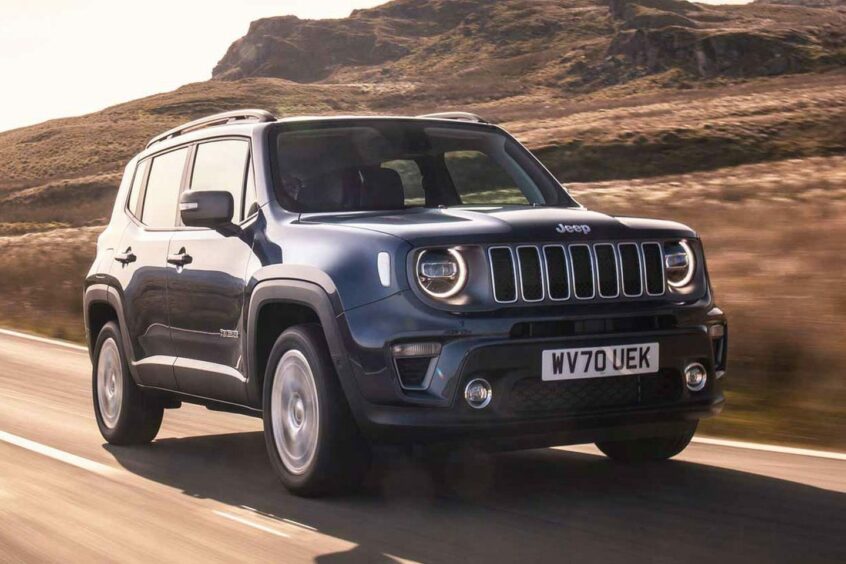
Contrary to popular misconception it’s not because Jeep was the first four-wheel-drive machine to appear in all seven continents, or that it represents the seven Wonders of the World, the Seven Seas, the colours of the rainbow or the seven directions – north, south, east, west, up, down and centre.
It’s simply down to commercial reality.
The original Willys was built with Ford who first designed the stamped, vertical-slot steel grille but, after the war, Ford kept the trademark so when a civilian version was produced it had to come up with the modified seven-slot grille.
That has continued over the years through a series of corporate takeovers and mergers, and has now ended up in the hands of the giant Stellantis Group, which owns a host of brands including Fiat, Citroen, Peugeot and Vauxhall.
Jeep establish first all-terrain vehicle
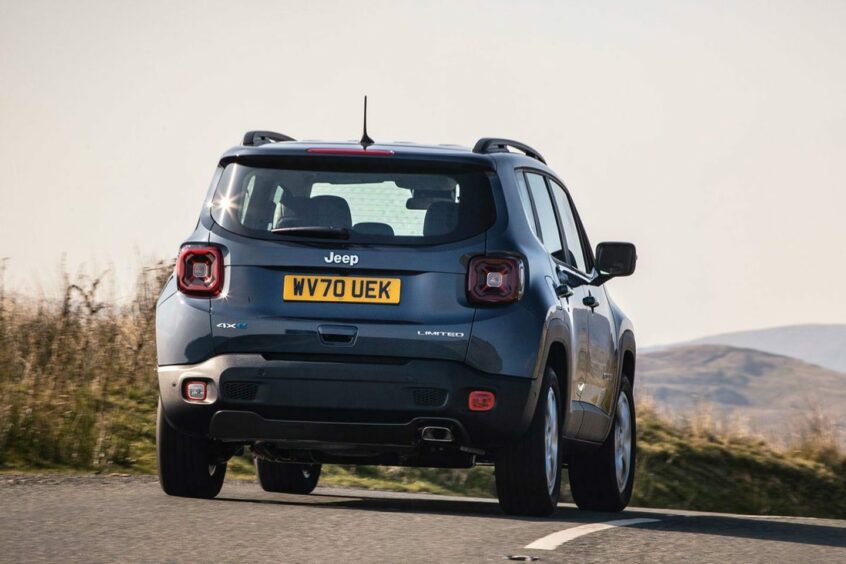
Jeep boasts they were the first to come up with an all-terrain vehicle. The Willys arrived a full eight years before Spencer Wilks, boss of the Rover Car Company, used the island of Islay, where he had a home, as a testing ground for his creation, the Land Rover.
The seven-slot grille is used in variations across the current four-model range and is so distinctive it almost doesn’t need the Jeep name on the bonnet.
One of the newest models to display it also has the latest hybrid technology under the surface.
It’s good to see such a stalwart of off-road adventures getting into the electric arena
The Renegade is Jeep’s entry into the small SUV market, which is a crowded place these days with some fine examples from Skoda, Ford, Audi, and even MINI, and is a close relation of the Fiat 500X, built in the same factory in southern Italy.
There are a range of engine and transmission options but I spent some time behind the wheel of the 4xe plug-in hybrid, which uses the same 1.3-litre petrol engine as the standard version but has two electric motors.
400mm water fording capability
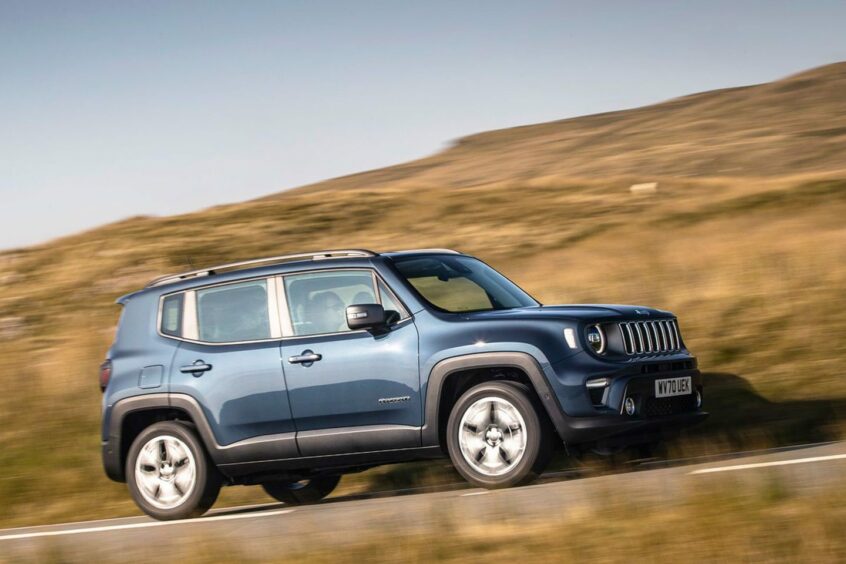
One is on the front axle and coupled to the combustion engine, while the second motor on the rear axle is fed by an 11.4 kWh battery under the rear seats to provide four-wheel-drive. Together they offer the possibility of 29 miles of electric-only driving.
It was the top-trim Trailhawk model, with heated leather seats and stacks of equipment and £2,600 of extras including electric panoramic sunroof.
There are three operating modes – Hybrid, Electric, E-Save – and there’s also a button for increased brake regeneration which helps keep the battery topped up.
There’s a six-speed automatic transmission selector to engage the different driving modes – Auto, Snow, Mud & Sand, and Rock – and Sport mode for enhanced throttle response and steering.
All high-voltage electronic components, including the control modules and the wiring between the battery pack and electric motors, are fully sealed and waterproof. As a result, the Renegade 4xe has a water fording capability of up to 400mm.
Comfortable driving and good visibility

The Trailhawk model comes with mud and snow tyres, and steel skid plates with useful ground clearance of 200mm.
On the road, the ride quality is OK but isn’t as sophisticated as others in this sector. The steering feels light and you’re aware of a bit of a body lean on tight bends, while the suspension does its best to soak up potholes and ruts – but you still feel most of them.
The driving position is comfortable and visibility all round is good, helped by the reversing camera, which comes as standard in the Trailhawk but the door mirrors are large and create a bit of wind noise at speed.
I was surprised that the interior wasn’t more spacious, and you might find that some long-legged passengers will be struggling to stretch out while there’s not a lot of room for their luggage.
Full charge in two hours
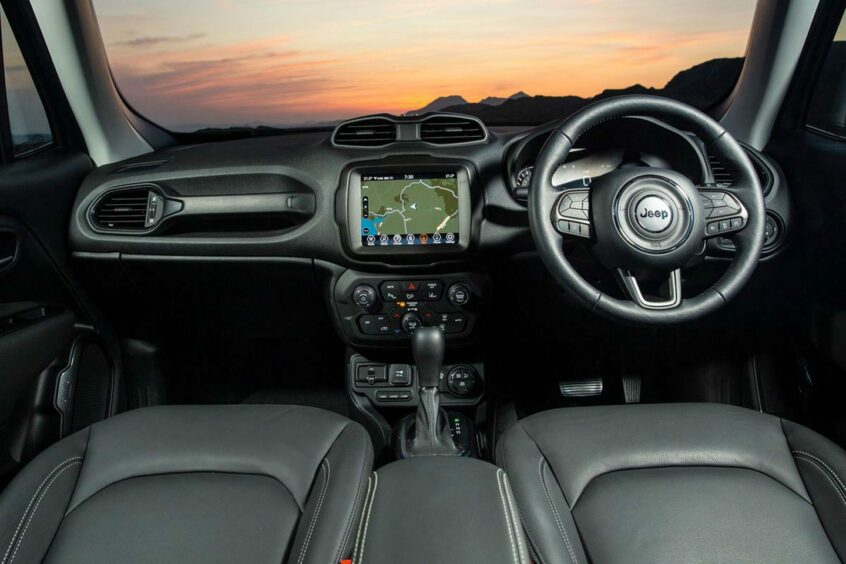
The interior design looks good but the materials feel a bit hard and utilitarian. There are plenty of buttons on the centre console for things like the climate control which is good but a lot of other info is hidden within the 8.4 inch infotainment screen, and it requires a fair degree of fiddling to find it.
The official economy figure is around 141mpg but I think you’d have to work hard and be very sensible with the electric power to achieve that.
Officially, the 4xe can be recharged at home on a 2.3 kW system in less than five hours, but if you upgrade the wallbox to 7.4 kW you should get a full charge in under two hours.
So it’s good to see such a stalwart of off-road adventures getting into the electric arena, even if it is not much more than a dip of a toe in the water.
I’m sure the vehicle is capable in the wilds, although you’ll only get the benefit of the electric economy on less-demanding commuter runs… But you’ll have that seven-slot piece of history at the front.
The Facts

Model: Jeep Renegade Plug-in Hybrid Trailhawk GSE 6-speed automatic
Price: £39,100 (£41,700 as tested)
0-62mph: 7.1 seconds
Top speed: 124mph
Range: 29 miles
Economy: 141mpg combined
CO2 emissions: 46g/km
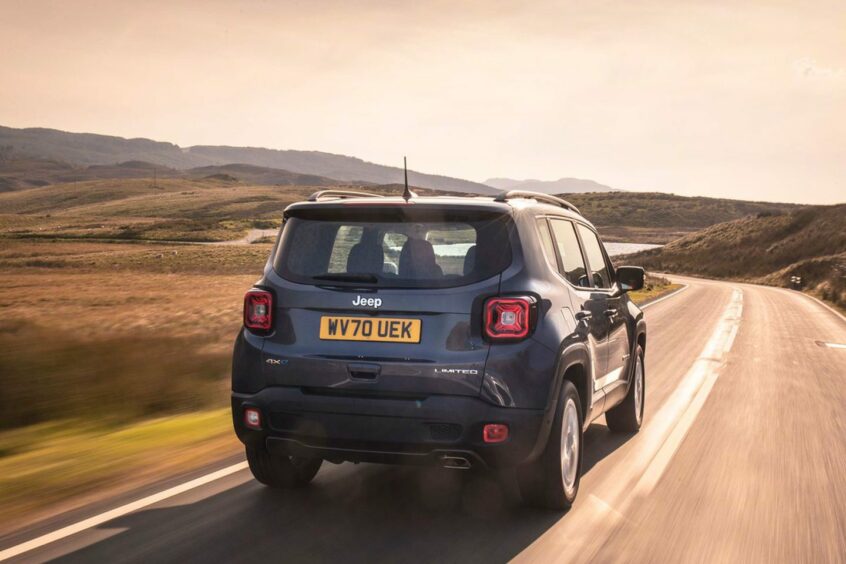
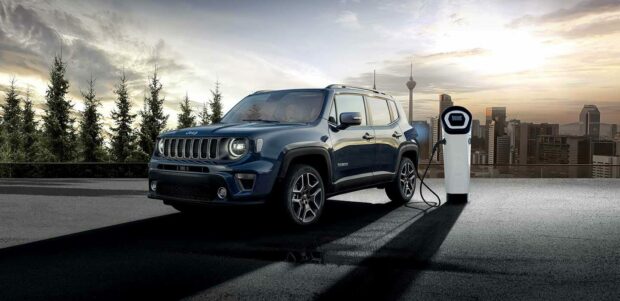
Conversation